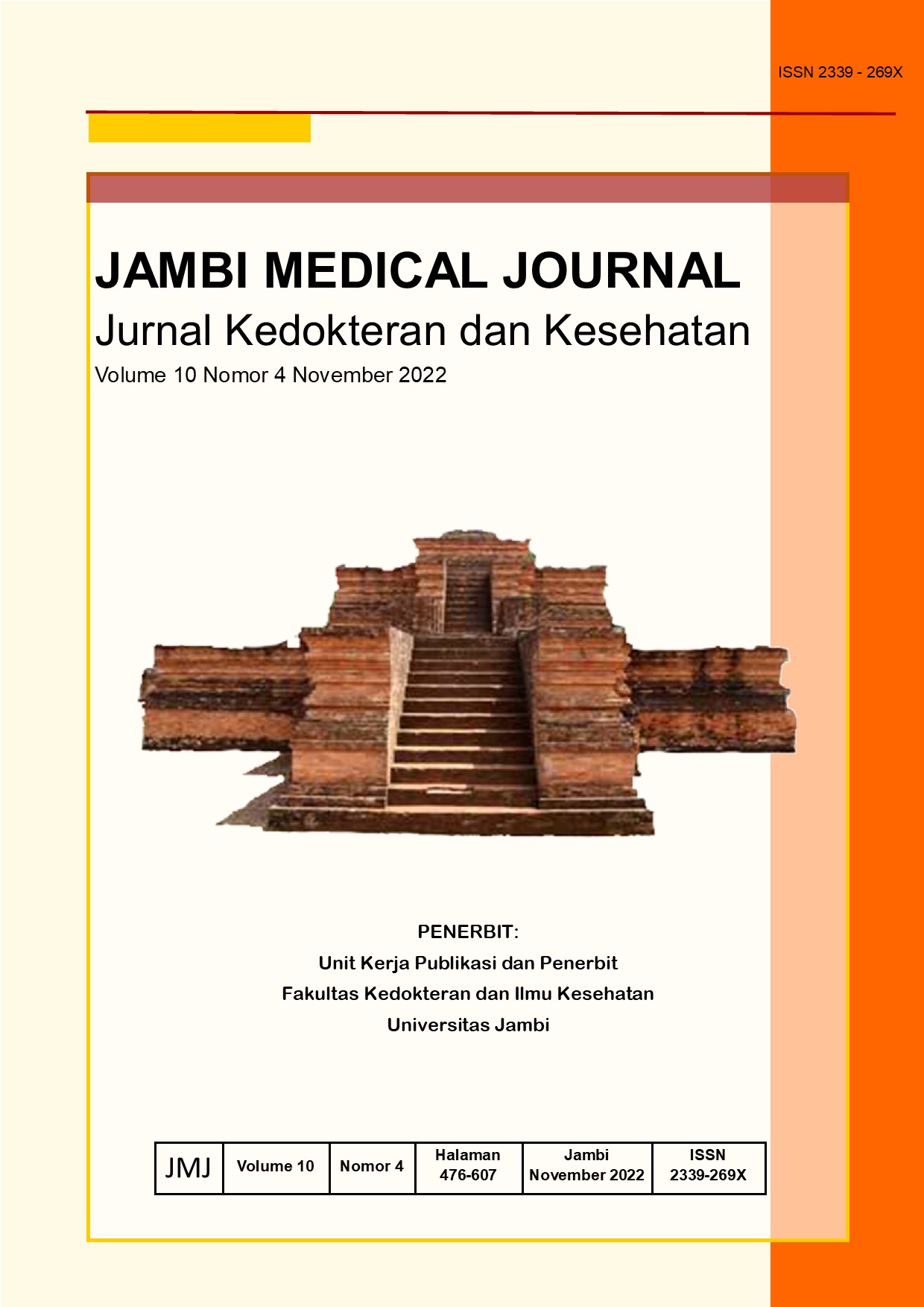HUBUNGAN EKSPRESI 8OH2DG SEBAGAI PENANDA STRES OKSIDATIF KERUSAKAN DNA DENGAN KEJADIAN PREEKLAMPSIA DAN LUARAN NEONATAL
DOI:
https://doi.org/10.22437/jmj.v10i4.21102Abstract
Background: Hypoxic conditions in preeclampsia cause oxidative stress in the placenta. Oxidative stress triggers endothelial dysfunction resulting in changes in placental parenchyma and vasculature, turn leads to clinical manifestations in maternal and neonatal. Previous studies reported that preeclampsia placental tissue increased the expression of the oxidative stress marker 8OH2dG.
Objective: This study aimed to observe the expression of the marker 8OH2dG on the incidence of
preeclampsia and its association with neonatal outcome.
Methods: This study design was case-control, a number of 44 pregnant women participated in this study. The case group was preeclampsia women based on American College of Obstetricians and Gynecologist (ACOG) 2013 criteria and normotensive women as control group. The immunohistochemical was perform in placental tissue for expression of 8OH2dG in trophoblast nuclei. The results were positive when the trophoblast cell nuclei were stained ≥5% with moderate and strong intensity; and negative if stained weakly <5%. Bivariate analysis was performed to determine the association of 8OH2dG expression with preeclampsia and neonatal outcome.
Results: This study reported the frequency of trophoblast nuclei with 8OH2dG positive staining was higher in the preeclampsia group than the control group. Expression of 8OH2dG positive staining also increased the risk of low birth weight and asphyxia.
Conclusion: The results of this study indicate that the marker 8OH2dG is associated with preeclampsia and adversely neonatal outcome.
Keywords: 8OH2dG, preeclampsia, oxidative stress, neonatal outcome












